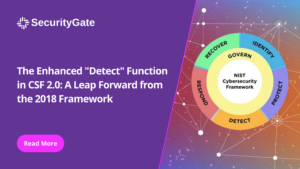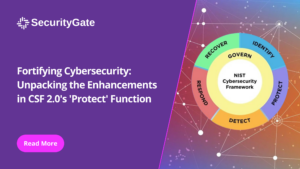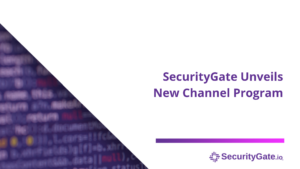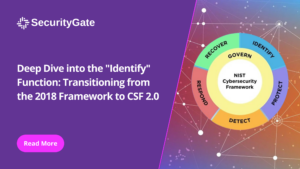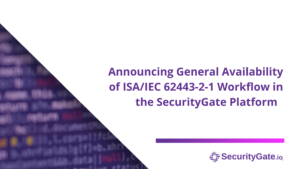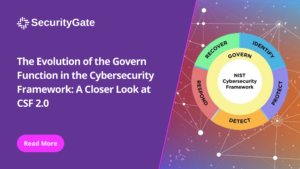We’ve aggregated the most viewed and downloaded helpful resources shared on our LinkedIn page and created a list of the top ten. Our aim is to provide you with an easy-to-access and concise overview of the most popular content on our page. We understand that your time is valuable, which is why we hope this list proves to be a useful resource for you.
- “CISO Playbook: First 100 Days” is a comprehensive guide aimed at setting up a Chief Information Security Officer (CISO) for success in their initial phase at an organization. This playbook is provided by the Cyber Leadership Institute and was published in 2019. It offers a structured approach for a new CISO to organize key activities and initiatives during their first 100 days. The guide includes strategies for:
a. Start-Up: Conduct thorough research into the company, understanding its history of breaches and executive team, and setting up initial meetings.
b. Understanding: Meeting key stakeholders, mapping them, learning about the business, and gathering essential reports and documents.
c. Prioritizing: Identifying quick wins, understanding longer-term issues, developing a vision, and getting feedback.
d. Executing: Delivering quick wins, establishing governance structures, and managing the team.
e. Results: Re-engaging with stakeholders, reporting on progress, and assessing the effectiveness of actions taken.
2. The “Gartner First 100 Days CISO Guide” provides strategic guidance for new Chief Information Security Officers (CISOs). Key points include:
- Leadership Role: CISOs are primarily leaders, managers, and communicators, not just technologists.
- Initial Achievements: Success depends on establishing credibility and laying the foundation for a defensible security program.
- Communication and Business Alignment: New CISOs need to understand leadership expectations and effectively communicate how security supports business outcomes.
- Strategic Priorities: Strengthen the cybersecurity program’s relationship with the business by linking leadership priorities to business outcomes.
- Strategy Over Technical Details: Define a security strategy before delving into technical specifics and decisions.
- Early Prioritization: Identify and accomplish two to five key priorities within the first 100 days.
- Handling Incidents: Allocate extra time for unforeseen security incidents.
- Team Support: Win the security team’s support by sharing a strategic vision and avoiding criticism of predecessors.
3. The “CISO Playbook: Cyber Resilience Strategy” emphasizes the importance of developing a focused and adaptive cyber resilience strategy. Key points include:
- In-depth Risk Assessment: Conduct thorough assessments to understand current capabilities and highest risk exposures.
- Stakeholder Buy-in: Gaining unwavering support from CEOs, C-suite executives, and boards is crucial for strategy success.
- Defining Target State: Setting realistic maturity goals aligned with risk appetite, industry standards, and available resources.
- Beyond Generic Frameworks: Considering regulatory requirements, supply chains, and digital transformation in strategy design.
- Linking to Business Goals: Integrating cyber resilience with overall business strategy, enabling growth and agility.
- People Over Technology: Focusing on changing mindsets and building a capable team rather than solely relying on technical solutions.
- Securing Funding: Navigating budget constraints and prioritizing initiatives that offer the highest return on investment.
- Effective Governance and Quick Wins: Establishing strong governance and focusing on initiatives that provide immediate benefits.
- Regular Strategy Review and Adaptation: Continuously revising the strategy to align with changing business and technological landscapes.
The playbook underscores that cyber resilience is not just an IT issue but a critical business enabler, necessitating strong leadership, strategic alignment, and effective stakeholder engagement.
4. The NIST Interagency Report (IR) 8286D focuses on using Business Impact Analysis (BIA) for comprehensive risk management in enterprises. It extends BIA beyond traditional business continuity to understand the impacts of various loss types on enterprise missions. This process identifies critical and sensitive assets, guiding risk directives like risk appetite and tolerance.
The document emphasizes that risk is measured in terms of impact on missions, making it crucial to understand the value of IT assets to enterprises. The BIA process involves determining asset values, loss scenarios, criticality, and sensitivity. It records interdependencies to inform enterprise risk strategy, developing performance metrics, system classification, risk escalation, and effective monitoring based on asset criticality and sensitivity. This holistic approach aids in optimizing risk management and resource utilization at the enterprise level.
5. The “CISA Monthly Resilience Toolkit” provides comprehensive guidance and resources for enhancing the security and resilience of critical infrastructure. Key points include:
- Focus on Resilience: Emphasizes building resilience to prepare for, withstand, and rapidly recover from disruptions, whether from natural hazards or cyber/physical threats.
- Engagement and Awareness: Encourages engagement across all sectors, including private, public, and non-profit, to strengthen infrastructure security and resilience.
- Wide Range of Threats: Addresses a spectrum of threats, from natural disasters to cyberattacks and terrorism, highlighting the need for comprehensive preparedness.
- Resources and Training: Offers various resources, including training, guidelines, and self-assessment tools for active shooter preparedness, chemical security, bombing prevention, and more.
- Shared Responsibility: Stresses the importance of a shared responsibility model involving government, private sector, and individual citizens in securing critical infrastructure.
- Specific Actions and Templates: Provides actionable steps for different stakeholders, including private sector organizations, government agencies, and individuals, along with templates for press releases and social media engagement.
- Integration of Cybersecurity: Highlights the necessity of integrating cybersecurity into physical security measures, acknowledging the interconnected nature of modern infrastructure.
This toolkit serves as a vital resource for enhancing nationwide efforts in critical infrastructure security and resilience, promoting a unified approach to addressing diverse security challenges.
6. The “CISOs as Board Directors” explores the increasing demand for cybersecurity expertise on corporate boards in light of new SEC rules requiring public companies to disclose board members’ cybersecurity expertise and governance practices. This reflects a growing recognition of cybersecurity as a critical aspect of corporate governance and risk management.
Key insights include:
- Emergence of Cybersecurity as a Board-Level Issue: With the SEC’s push for transparency in board members’ cybersecurity expertise, companies are likely to appoint directors with proven cybersecurity skills, highlighting a significant skill shortage in existing boards.
- CISOs as Potential Board Candidates: CISOs, with their expertise in cybersecurity, are considered a logical choice for these board roles. However, the readiness of CISOs for board positions varies, raising questions about their qualifications for effective board membership.
- Key Traits for Cyber Experts on Boards: The analysis identified crucial traits for cyber experts serving on boards, including infosec tenure, broad experience, capability to handle scale, advanced education, and diversity. These traits are seen as essential for managing cybersecurity risks effectively at the board level.
- Variation in Board Readiness Among CISOs: The readiness of CISOs for board roles shows significant variation. Some possess the necessary traits and experience, while others may need further development in areas like cross-functional expertise and advanced education.
- Recommendations for Companies and CISOs: The report offers guidance for companies considering CISOs for board roles, emphasizing the importance of diversity and the value of board certification programs. For CISOs aspiring to board positions, it suggests enhancing soft skills, filling experience gaps, and building a strong personal brand.
In summary, the document highlights the evolving role of cybersecurity in corporate governance and the potential for CISOs to play a more significant role in boardrooms, provided they possess the necessary skills and experience.
7. “Best Practices for MITRE ATT&CK Mapping” provides comprehensive guidance on accurately mapping cyber threat intelligence to the MITRE ATT&CK framework. It emphasizes the importance of understanding adversary behavior in protecting networks and data. Key aspects include:
- ATT&CK Framework Overview: The document explains the ATT&CK framework, a globally accessible knowledge base of adversary tactics and techniques based on real-world observations.
- Mapping Guidance: It offers detailed instructions on mapping MITRE ATT&CK into finished reports and raw data, highlighting common mistakes and biases to avoid.
- Techniques and Tactics: The guide discusses various levels of adversary behavior, from tactics (the ‘why’) to techniques (the ‘how’), sub-techniques (more granular descriptions), and procedures (specific instances of usage).
- Best Practices: It provides best practices for mapping, such as understanding the technology domains of ATT&CK, ensuring context in mapping, and avoiding analytical errors.
- Presentation in Reports: Recommendations are given on presenting ATT&CK in finished reports, including in-line ATT&CK TTP links, summary ATT&CK tables, and visualizations using ATT&CK Navigator.
- Updated Content: The document reflects the latest updates in the ATT&CK framework, addressing evolving cyber threats and new features.
- Practical Applications: It highlights practical applications like developing adversary profiles, conducting trend analyses, and augmenting reports for detection, response, and mitigation.
This guide is crucial for cybersecurity professionals for accurately mapping and understanding cyber threats using the MITRE ATT&CK framework.
8. The “CISO’s Guide to AI in 2023” eBook provides comprehensive insights into the application of Artificial Intelligence (AI) in cybersecurity. Key points include:
- Current Trends: The increasing reliance on connected devices and vast data generation necessitates AI in cybersecurity. AI is prioritized in IT budgets for its ability to enhance security operations.
- Benefits of AI in Cybersecurity: AI improves threat intelligence, reduces false positives, increases efficiency, provides predictive analytics, resolves talent gaps, and improves malware response and incident management.
- Drawbacks of AI in Cybersecurity: Challenges include the expense of AI integration, algorithmic rigidity, the need for testing and validation, issues with explainability, privacy concerns, and vulnerability to adversarial attacks.
- Decision-Making in Selecting AI Solutions: Emphasizes the importance of choosing vendors with a proven track record, data-rich AI models, high accuracy rates, compatibility with existing systems, transparency, vendor support, and compliance adherence.
The eBook highlights AI’s transformative role in cybersecurity, balancing its benefits with potential drawbacks and guiding CISOs in making informed decisions about integrating AI into their security strategies.
9. The “2023 Global Chief Information Security Officer Survey” reveals several key findings:
- Board Participation: In 2023, the share of CISOs who sit on a corporate board more than doubled from 14% in 2022 to 30%. Most CISOs not serving on a board expressed a desire to do so. Their presence on boards is seen as crucial, considering less than half of CISOs feel that boards have the knowledge or expertise to respond to their presentations effectively.
- Compensation Trends: Generally, CISOs across various regions expect their cash base to either remain the same or increase modestly in the coming year. In the United States, the median total cash compensation for CISOs increased by 6% year over year to $620,000 in 2023. Median total compensation, including annualized equity grants or long-term incentives, also rose to $1,100,000. Financial services industry CISOs reported the highest average total compensation, while those in industrial companies reported the lowest.
- Bonuses and Equity: About half of the surveyed CISOs reported receiving a cash joining bonus, and one-third reported receiving an equity joining bonus. Those in financial services reported the highest average cash bonus and those in technology and services reported the highest average equity bonus.
These insights reflect the evolving role and recognition of CISOs in corporate governance and their compensation trends in a dynamic market environment.
10. The “ICS Field Manual” outlines the increasing challenges and threats faced by Industrial Control Systems (ICS) due to their modernization and growing connectivity to the Internet and business networks. This evolution has introduced IT-related security vulnerabilities to ICS, thereby expanding the cyber threat pool and exposing these systems to attacks that can cause direct or indirect physical damage, environmental impacts, and even human injury or death.
Key points include:
- Expanding Threat Landscape: The threat landscape for ICS is continually increasing. Cyber attackers possess skills extending beyond traditional IT intrusions, specifically targeting OT and control systems, with a deep understanding of ICS and the ability to develop attack tools.
- Increasing Intent and Capabilities of Threat Actors: There is a growing trend in the intent and capabilities of threat actors to impact ICS environments, with the potential for cyber-kinetic attacks leading to significant physical damage and harm.
- IT and ICS Security Convergence: While IT security principles can guide ICS security, direct replication is not advised. Instead, elements of IT security should be adapted for ICS, prioritizing human life, reliability of operations, and protection of physical assets. The convergence of IT and OT groups is crucial for end-to-end security event correlation and an active defense strategy, including network security monitoring and threat hunting.
- Notable ICS Attacks: The manual references specific targeted ICS attacks like Stuxnet, Havex, Blackenergy, CRASHOVERRIDE, TRISIS/TRITON, and PIPEDREAM. These attacks against critical infrastructure increasingly impact daily life, highlighting the importance of securing these systems against both targeted attacks and IT-related malware like Ransomware and Cryptomining, which can cause disruptions in ICS operations.
Overall, the manual emphasizes the need for a tailored approach to ICS security, blending IT security practices with a deep understanding of the unique challenges and high stakes involved in protecting industrial control systems.
To learn more about SecurityGate, subscribe to our newsletter.

